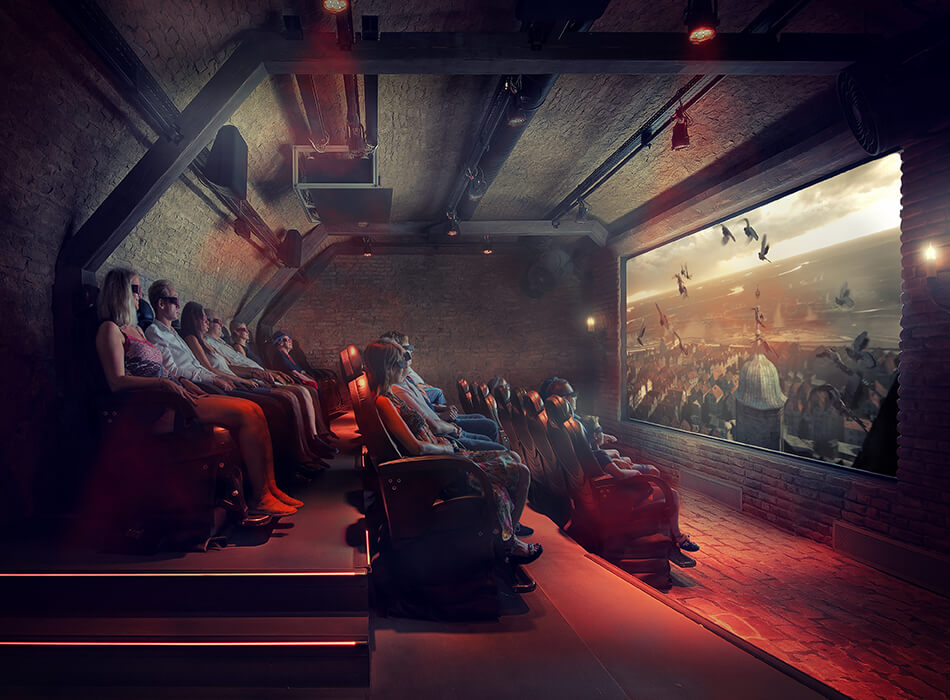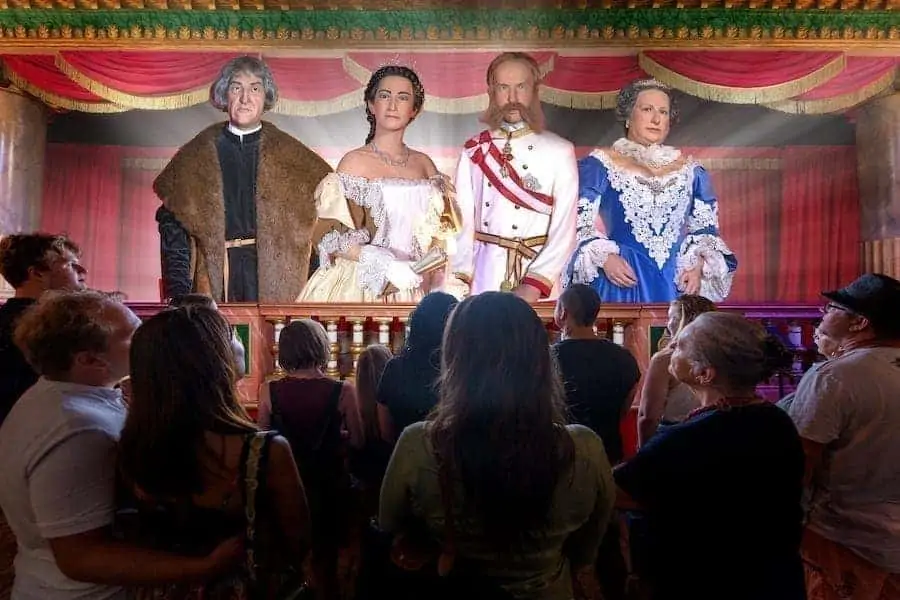5D Cinema – The magic of the Time Ride
Experience the magic of the Time Ride, the award-winning 5D attraction (Animago Award), with which you fly back 2000 years into the past and become part of history yourself thanks to breathtaking 3D and special effects. Travel to medieval Vienna at the time of the plague and take part in the Turkish siege of 1683.

The performance

Vindobona Roman Empire
15 BC – around 400 AD
Accompany a patrol through the Roman camp at Time Travel and experience live the cremation of the great general Emperor Marcus Aurelius in 180 A.D. When the Romans advanced to the Danube in 15 B.C., Vienna became part of the Roman Empire. The settlement was subsequently adapted as a military camp and given the name Vindobona.

The plague of 1679
Time Travel Vienna takes you on a journey through the plague-ridden city. But please watch out for the rats! In 1679, Vienna is struck by the plague, to which large parts of the population fall victim. Even today, the plague column on the moat is a reminder of the so-called “Black Death”. Augustin, a street musician, becomes famous with the plague when he falls heavily drunk into a plague pit outside the city one day and is only pulled out singing the next morning.

St. Stephen’s Cathedral
Explore the gigantic Time Travel Vienna the gigantic construction site and fly with the pigeons to the top of what was then the tallest tower in the world. (15th century) The first parts of St. Stephen’s Cathedral were built in 1137 and were originally located outside the city. For over three centuries, the cathedral has been extended again and again and is now one of Vienna’s landmarks.

Turkish sieges in 1529 and 1683
Experience the Time Travel Vienna the attack of the Turkish army directly from the city wall! Although the Turks had already failed in their siege in 1529, they faced Vienna a second time in 1683. With 200,000 men, Grand Vizier Kara Mustapha besieges the city, tries to penetrate it with the help of tunnels and blows up the city wall with mines.

The Viennese coffee house 1685 to the present day
Visit a traditional Viennese coffee house at Time Travel! After the Turkish troops fled their camp, sacks of small green coffee beans were discovered in the tents they had left behind. Shortly afterwards, in 1685, an Armenian merchant named Johannes Diodato opened the first Viennese coffee house. An Austrian coffee specialty is the “Melange” with milk and milk foam.

The Habsburg Show
